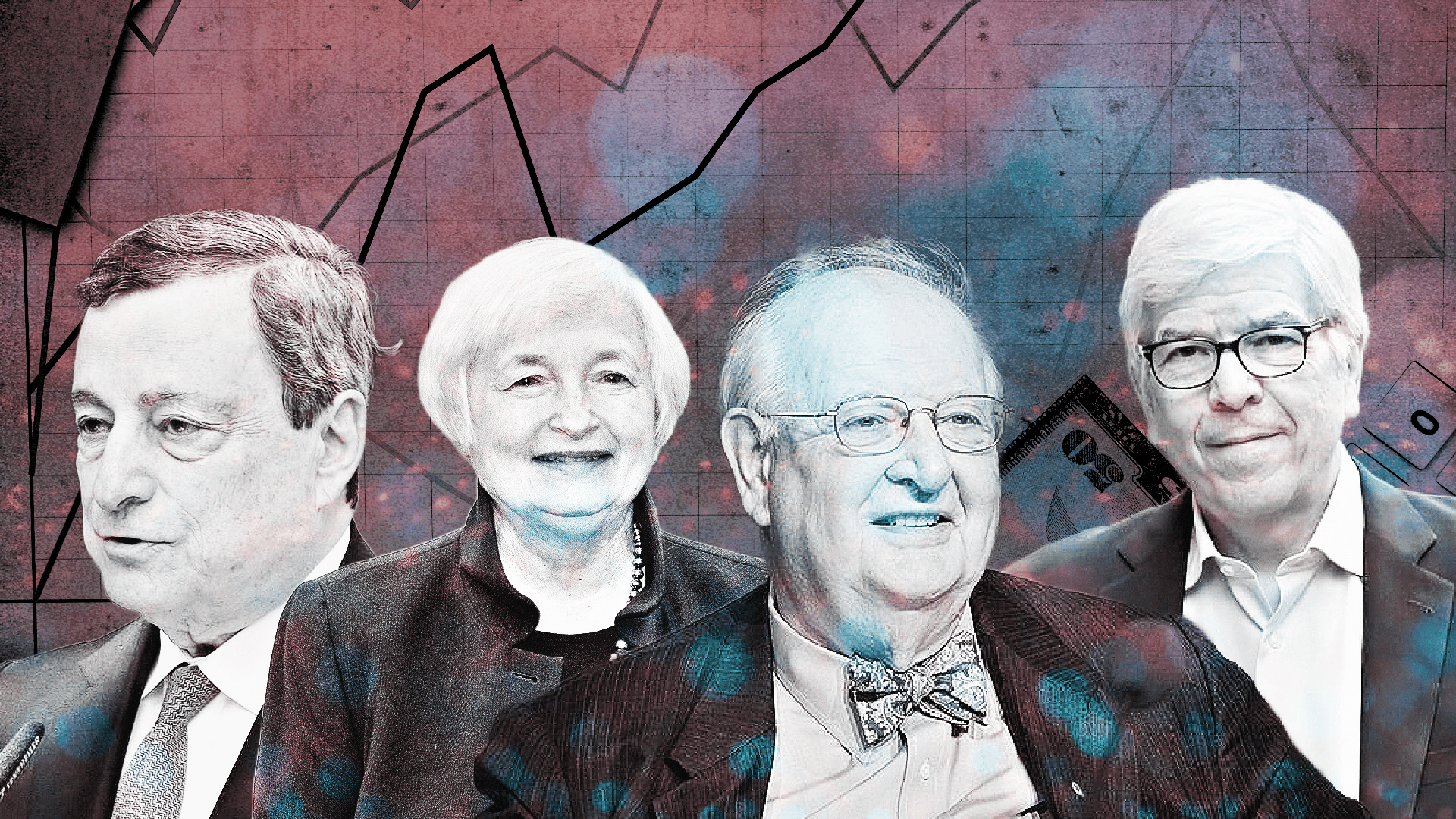China’s central bank is effectively anchoring the yuan to the dollar, a policy twist that has helped stabilize the currency in a year of political transition and market jitters about China’s economic management.
[Lingling Wei & Saumya Vaishampayan] May 25th, 2017 [The Wall Street Journal]
The yuan weakened more than 6% against the dollar in 2016; this year, it is up roughly 1%, and the expectation that the currency will fluctuate—a gauge known as implied volatility—is around its lowest in nearly two years.
The newfound tranquility may not last: The focus seen in recent weeks on stability against the dollar, whether it goes up or down, means pressure on the yuan to weaken could get dangerously bottled up, potentially bring bouts of sharp devaluation.
On Wednesday, Moody’s Investors Service cut China’s sovereign credit rating, citing the peril of rising debt as growth slows. The effort to keeping up with the dollar could add to the challenge by forcing the central bank to keep burning through its foreign-exchange reserves to support the yuan.
How China manages its currency is one of the most consequential decisions in global financial markets—and one that remains largely inscrutable to investors. As Beijing tackles a huge buildup of corporate debt, many investors worry the process could create more risk and even, if long-suppressed volatility erupts in ways that can’t be controlled, set off a financial crisis.
The shift toward the dollar comes in a year of enormous political stakes. Beijing is preparing for a twice-a-decade leadership transition in the fall and its emphasis in markets and the economy has been on stability.
While recent regulatory efforts aimed at curbing debt rattled Chinese markets for stocks and bonds, the country’s currency market has been relatively calm.
The People’s Bank of China’s previous strategy was to let the yuan track the dollar when the U.S. currency weakened—part of a tactic to guide the currency steadily lower but keep it from falling too fast. When the dollar strengthened, the central bank shifted the yuan’s “fix” instead to a basket of currencies.
With damping currency volatility against the dollar now a bigger priority, the yuan has been propped up even as the dollar rises. A case in point: Early Wednesday, the yuan’s official value came in at 6.8758 a dollar, well firmer than the markets’ expectation for 6.9 per dollar and only slightly weaker than the previous fixing. A day later, after the Moody’s downgrade, the PBOC again fixed the yuan stronger than expectations, and traders say some big Chinese banks sold dollars in early trading to bolster the yuan.
The close alignment with the dollar could ease the threat of a trade war with the U.S., after President Donald Trump claimed China has exploited weakness in the currency at the expense of its trading partners. Mr. Trump recently refrained from labeling China a currency manipulator.
“China’s management of its currency has changed significantly in the wake of the U.S. election, with the renminbi essentially repegging against the dollar,” said Robin Brooks, a former Wall Street currency strategist and now chief economist at the Institute of International Finance, using another name for the yuan. “The repeg could be quite sticky and only a major surprise has the potential to dislodge the exchange rate.”
A study by Mr. Brooks and Gene Ma, China economist at the institute, concludes that the central bank has moved away from a rule-based method of fixing the yuan and is exerting more “discretion” over the exchange rate.
Press officials at the PBOC didn’t respond to requests for comment. In a report issued on Thursday, the Commerce Ministry said China is trying to strike a balance between improving the yuan’s flexibility and keeping it stable.
The steadier yuan, coupled with more restrictions on money leaving China and higher interest rates, has calmed investors and helped keep money onshore.
Some Chinese exporters—the main players in the country’s foreign-exchange trading market—are switching from hoarding their dollar earnings to selling them for yuan. That has helped reduce capital outflows and beef up the nation’s war chest of currency reserves.
“Our forecast shows that renminbi will remain stable at least in the near future, and we no longer need to delay converting our dollar profits to renminbi,” said Lang Guanghui, chairman of aluminum producer Sunstone Development Co. His company put off such conversion for the entire year of 2016.
The recent approach is a contrast from Beijing’s bid two years ago to woo the International Monetary Fund to get it to declare the yuan a reserve currency, with pledges to instill greater market influence and transparency into its currency management.
Some Chinese officials say it is in China’s and the world’s interest to loosen controls on the yuan only gradually, as setting it free all at once could cause global market turbulence.
“I believe in strengthening the management of expectations for the currency and keeping the exchange rate basically stable,” said Sheng Songcheng, a senior adviser at the central bank.
China’s exchange-rate regime has been a cause of global market turbulence in the past two years. Implied volatility hasn’t been at its current lows since before the central bank unexpectedly devalued the yuan in the summer of 2015. The bank at the time also laid out a strategy to give market forces more sway in setting the yuan’s value—only to back away from the plan after huge selloffs ensued.
A resurgent dollar, driven by more U.S. interest-rate increases, could make it much costlier for China to maintain the anchor to the dollar, potentially hurting Chinese exporters’ competitiveness. That would drag down growth further and add to economic headwinds at home.
Meanwhile, the PBOC is letting the yuan slide against currencies of its other trading partners, like the Korean won and the Japanese yen. An index of the yuan’s value against a basket of currencies fell to its lowest level on Friday since it was first published by the central bank in 2015. That helps give Chinese exporters a leg up in those markets.
“It’s depreciation by stealth,” said Ashley Perrott, head of pan-Asian fixed income at UBS Asset Management in Singapore.
But if the dollar starts to rally and China continues to link the yuan to the dollar, that would mean a stronger yuan compared with the currencies of those other trading partners.
“That basically means monetary conditions in China will get tighter, and that’s not what they need right now,” says Guillermo Felices, a senior investment strategist for multiasset solutions at BNP Paribas Investment Partners in London.













